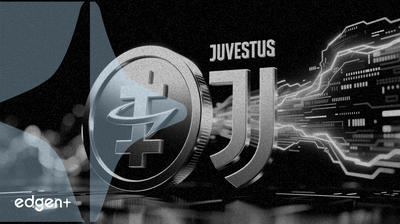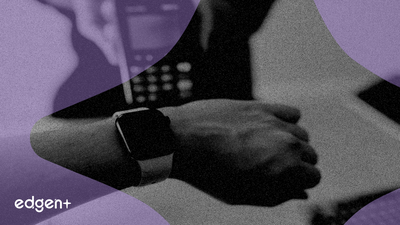Geri


## Yönetici Özeti **USDT** stablecoin'inin işletmecisi Tether, İtalyan futbol kulübü **Juventus FC**'deki **Exor'un** %65,4'lük kontrol hissesini satın almak için tamamı nakit bir teklif sundu. Teklif, tamamlanmanın ardından kulübe ek 1 milyar dolar enjekte etme taahhüdüyle birlikte geliyor. Bu hamle, büyük bir kripto tabanlı kuruluşun geleneksel spor dünyasına önemli bir stratejik girişini temsil ediyor ve önemli sermaye rezervlerini kullanarak küresel olarak tanınan bir markayı satın almayı ve finansal istikrarını sağlamayı hedefliyor. ## Ayrıntılı Olay Teklif, iki aşamalı bir finansal strateji çiziyor. İlk olarak, **Exor'un** çoğunluk hissesinin tamamı nakit olarak satın alınması, kulübün kontrolünü **Tether'a** devredecek. İkinci olarak, mevcut borçları temizlemek ve kulübün operasyonel ve rekabetçi kapasitesine yatırım yapmak için 1 milyar dolarlık ek bir sermaye enjeksiyonu ayrılmıştır. İşlem başarılı olursa, dijital varlık endüstrisi ile köklü kurumlar arasındaki en yüksek profilli kesişim noktalarından birini işaret edecek, potansiyel olarak Juventus'u borsadan çıkaracak ve kripto devinin özel mülkiyetine geçirecektir. ## Finansal Mekanizmalar ve Stratejik Bağlam Avrupa futbol kulüpleri genellikle önemli borç yükleriyle karakterize edilir. Örneğin, **Manchester United** (NYSE: MANU), kaldıraçlı bir satın almanın ardından net borcunun 1 milyar doları aştığını bildirdi. Diğer kulüpler, yükümlülüklerini yönetmek için karmaşık finansman yapıları izlediler. **AC Milan** yakın zamanda, önceki sahibi Elliott Investment Management tarafından tutulan borcu yeniden finanse etmek için yaklaşık 600-700 milyon dolarlık özel kredi holdco kredisi aradı ve ayni ödeme (PIK) seçenekleri olan enstrümanları kullandı. Bu bağlamda, **Tether'ın** tamamı nakit teklifi çarpıcı biçimde farklı bir yaklaşım sunuyor. **Tether**, varlığı kendi satın alımını finanse etmek için kaldıraç kullanmak yerine, mevcut sermayesini kullanarak kulübün borcunu tamamen azaltmayı hedefliyor. Bu strateji, sporda yaygın olan kaldıraçlı satın almalardan ziyade, **Mars, Incorporated'ın** yakın zamanda **Kellanova'yı** 36 milyar dolarlık tamamı nakit satın alması gibi, nakit açısından zengin bir özel şirketin stratejik bir satın almasına daha çok benziyor. Bu hamle, **Juventus'a** sermaye yoğun bir sektörde önemli bir rekabet avantajı sağlayacak temiz bir bilanço sunacaktır. ## Daha Geniş Piyasa Etkileri Başarılı bir satın alma, **Tether** ve daha geniş kripto para ekosistemi için önemli bir onay görevi görecektir. **Tether** için bu, stratejik bir çeşitlendirmeyi temsil ediyor ve devasa rezervlerini yüksek profilli, dijital olmayan bir varlığa dağıtıyor. Bu, meşruiyetini artırabilir ve kripto piyasalarının sınırlarının ötesinde uzun vadeli bir vizyon sergileyebilir. Anlaşma ayrıca, dijital varlık alanında elde edilen karların fiziksel dünyadaki büyük markaları satın almak ve canlandırmak için etkili bir şekilde kullanılabileceğini kanıtlayarak kripto tabanlı firmalar için yeni bir oyun planı oluşturabilir. Böyle bir hamle, sektörün spekülatif ticaretten stratejik kurumsal finansa doğru olgunlaştığını gösteriyor ve potansiyel olarak diğer kripto firmalarını spor, medya ve diğer sektörlerdeki geleneksel varlıkları benzer şekilde satın almaya teşvik edebilir. ## Uzman Yorumları ve Emsaller Piyasa gözlemcileri, önerilen satın almanın, herhangi bir büyük sınır ötesi M&A işlemi gibi yoğun bir düzenleyici incelemeyle karşılaşacağını belirtiyor. **Mars-Kellanova** anlaşmasının dünya çapında 28 düzenleyici kurum tarafından koşulsuz olarak onaylanması, ilgili karmaşıklıklar için yakın bir emsal teşkil ediyor. Düzenleyiciler muhtemelen fon kaynağına ve satın alan kuruluşun uzun vadeli istikrarına odaklanacaklardır. Anlaşma alışılmadık olsa da, potansiyel bir **SpaceX** IPO beklentisinde görüldüğü gibi, yüksek profilli, dönüştürücü girişimlere karşı belirgin bir yatırımcı iştahı var. Analistler, **Tether'ın** küresel olarak tanınan bir futbol markasının "parıltısı" için "esas" olan önemli bir nakit enjeksiyonu sağladığını öne sürüyorlar. Bu teklifin başarısı, Avrupa futbolunun finansal manzarasını değiştirmekle kalmayacak, aynı zamanda dijital ve geleneksel ekonomiler arasındaki sınırları da yeniden tanımlayacaktır.

## Yönetici Özeti Ripple, yerel dijital varlığı **XRP**'nin faydasını, **Ethereum** ve **Solana** blok zincirlerinde kullanılabilir hale getirerek stratejik olarak genişletiyor. Bu girişim, **XRP**'yi sınır ötesi ödemelerdeki geleneksel kullanım durumunun ötesine taşıyarak daha geniş Merkezi Olmayan Finans (DeFi) ekosistemine entegre etmek üzere tasarlanmıştır. Genişleme, köprüleme teknolojisinden yararlanarak **XRP**'nin sarılmış versiyonlarını oluşturur ve bu sayede önde gelen DeFi platformlarındaki akıllı sözleşmeler ve uygulamalarla etkileşime girmesini sağlar. ## Olay Detayı **XRP**'nin **Ethereum** ve **Solana**'da piyasaya sürülmesi, **Hex Trust** ve **LayerZero**'nun kilit teknoloji ortakları olarak belirlendiği çapraz zincir köprüleri aracılığıyla kolaylaştırılmıştır. Bu mekanizma, yerel **XRP**'yi kendi defterinde kilitlemeyi ve hedef blok zincirinde eşdeğer, "sarılmış" **XRP** tokenı (wXRP) çıkarmayı içerir. Bu sarılmış token, yerel varlık tarafından tamamen teminatlandırılmış olup, fiyat denkliğini garanti eder. Bu teknik yaklaşım, **XRP**'nin **Ethereum**'da bir ERC-20 tokenı veya **Solana**'da bir SPL tokenı işlevselliklerini kazanmasını sağlar. Sonuç olarak, sahipler **XRP**'lerini Uniswap veya Serum gibi merkeziyetsiz borsalar (DEX'ler), Aave ve Compound gibi borç verme protokolleri ve bu ekosistemlere özgü çeşitli getiri çiftliği platformları dahil olmak üzere geniş bir DeFi uygulama yelpazesinde kullanabilirler. ## Piyasa Etkileri Bu genişleme, **Ethereum** ve **Solana** DeFi pazarlarının derin likidite havuzlarından yararlanarak **XRP**'nin likiditesini ve işlem hacmini önemli ölçüde artırma potansiyeline sahiptir. Bu platformlardaki tüccarlar ve geliştiriciler için, işlem çiftleri, teminatlandırma ve diğer finansal stratejiler için yeni, yüksek likit bir varlık sunar. Ancak, bu hareket aynı zamanda bu ekosistemlerdeki mevcut varlıklar için rekabet de yaratmaktadır. Sarılmış **XRP**'nin başarısı, DeFi protokolleri tarafından benimsenme oranına ve kullanıcıların varlıklarını köprülemeye istekli olmasına bağlı olacaktır. Birincil çıkarım, **XRP**'nin ödeme odaklı bir varlıktan merkeziyetsiz finansal hizmetler için daha çok yönlü bir araca dönüşmesidir, bu da potansiyel olarak genel faydasını ve talebini artıracaktır. ## Uzman Yorumu Daha geniş faydaya yönelik stratejik pivot, Ripple'ın son düzenleyici başarılarıyla uyumlu. Para Birimi Denetleme Ofisi'nden (OCC) ulusal bir emanet bankası lisansı için koşullu onayından sonra, Ripple CEO'su **Brad Garlinghouse**, şirketin uyum ve inovasyona odaklandığını vurguladı. OCC'nin kararıyla ilgili bir açıklamada, bunun sektör için "muazzam bir adım" olduğunu ve federal denetim altında faaliyet gösterme taahhüdünü vurguladı. Piyasa analistleri bu paralel gelişmeleri olumlu karşıladı. 'Steph is Crypto' olarak bilinen bir uzman, banka lisansının yakın zamanda onaylanmasını **XRP** için "yükseliş" katalizörü olarak tanımladı. Bu duygu, finans camiasındaki diğerleri tarafından da desteklenmekte olup, onlar da düzenleyici netliği kurumsal benimsemenin bir öncüsü olarak görmektedir. ## Daha Geniş Bağlam Ripple'ın çoklu zincir stratejisi ve ulusal bir emanet bankası lisansı arayışı, daha büyük bir hedefin birbiriyle bağlantılı bileşenleridir: **XRP**'yi ve ilgili hizmetleri düzenlenmiş finansal sisteme yerleştirmek. Bir federal lisans alarak Ripple, doğrudan federal denetim altında dijital ve geleneksel varlıklar için saklama ve takas hizmetleri sunabilir. Bu durum, düzenlenmiş karşı taraflara ihtiyaç duyan kurumsal müşterileri çekmek için çok önemlidir. Onay, Ripple'ın planlanan stablecoin'i **RLUSD**'nin ABD bankacılık sistemine entegrasyonunun da önünü açıyor. OCC'nin ulusal bankaların takas için dijital varlıkları kullanmasına izin veren son kararı bu konumu daha da güçlendiriyor. Merkeziyetsiz ekosistemlere genişleme ve aynı zamanda geleneksel finansta sağlam bir yer edinme şeklindeki bu iki yönlü yaklaşım, Ripple'ı ikisi arasındaki boşluğu doldurmaya konumlandırıyor. Bu, **Circle** ve **Paxos** gibi diğer önemli oyuncuların da paylaştığı stratejik bir hedeftir ve onlar da OCC'den koşullu onay almıştır.

## Yönetici Özeti Interactive Brokers, perakende yatırımcı hesaplarının fonlanması için stablecoin'leri kabul edeceğini duyurdu. Bu karar, finansal hizmetler sektörünün dijital varlıkları giderek daha fazla entegre etmesiyle rekabetçi kalmak için stratejik bir hamleyi temsil ediyor. Özelliğin, firmanın uygun ABD müşteri tabanının bir kısmından başlayarak kademeli bir kullanıma sunum yoluyla tanıtılması planlanıyor. Bu girişim, geleneksel finans piyasaları ile dijital para ekosistemi arasındaki boşluğu doldurmada önemli bir adımı işaret ediyor. ## Olay Detayı Yapılan duyuruya göre, **Interactive Brokers**'taki perakende yatırımcılar, stablecoin'leri doğrudan işlem hesaplarına yatırma olanağına sahip olacak. Bu girişim, geleneksel yöntemlere kıyasla fonlamanın verimliliğini ve hızını artırmak için tasarlanmıştır. Firma bu hamleyi, dijital varlıkların daha yaygın hale geldiği hızla gelişen finansal ortamda rekabetçi konumunu sürdürmek için gerekli bir adım olarak konumlandırdı. Başlangıç aşaması, belirli bir ABD müşteri grubunu hedef alacak ve daha geniş kullanılabilirlik planları bunu takip edecek. ## Finansal Mekanizmaları Analiz Etme Bu entegrasyon, yatırımcıların doğrudan fonlama aracı olarak **USDC** gibi fiat destekli stablecoin'leri kullanmasına olanak tanır. Banka çalışma saatlerine tabi olan ve birkaç iş günü sürebilen geleneksel banka transferlerinden (ACH veya havale) farklı olarak, stablecoin işlemleri kendi blok zinciri ağlarında neredeyse anında, 7/24 işlenebilir. Bu mekanizma, takas sürelerini azaltır ve işlem maliyetlerini düşürerek, sermayeyi menkul kıymet piyasalarına dağıtmak için daha verimli bir giriş noktası sunar. Blok zinciri altyapısından yararlanarak, süreç işlemin para yatırma ayağı için geleneksel ödeme kanallarını atlar. ## Piyasa Etkileri **Interactive Brokers**'ın bu kararı, diğer büyük aracı kurumlar üzerinde benzer yetenekleri benimsemeleri için rekabetçi baskıyı artırması bekleniyor. Yatırımcılar dijital varlık işlemlerinin hızına ve kolaylığına alıştıkça, bu giriş noktalarından yoksun aracı kurumlar rekabet dezavantajıyla karşılaşabilir. Bu gelişme aynı zamanda stablecoin'lerin ana akım benimsenmesini hızlandırmaya da hazırlanıyor, böylece saf spekülatif kripto varlıklar yerine değer aktarımı için standart bir finansal araç olarak kullanımlarını normalleştiriyor. Dijital ekonomi ile geleneksel yatırım platformları arasında daha akışkan bir bağlantı oluşturarak önemli bir fayda sağlar. ## Uzman Yorumları ve Daha Geniş Bağlam **Interactive Brokers**'ın bu hamlesi, yerleşik finans şirketlerinin stablecoin teknolojisini entegre etme eğilimiyle uyumludur. Örneğin, **Visa** zaten stablecoin'leri küresel ödeme ağına dahil etmiştir. **Visa Direct**'in kıdemli başkan yardımcısı **Yanilsa Gonzalez-Ore**, şirketin 'yapay zeka ve stablecoin'ler gibi gerçek zamanlı ödemelerin ve gelişmekte olan teknolojilerin ön saflarında' olduğunu belirtti. Kasım ayında **Visa**, içerik oluşturucular ve gig ekonomisi çalışanları için **USDC** cinsinden stablecoin ödemelerini sağlayan bir pilot program başlattı ve dijital para birimlerini daha hızlı, daha verimli küresel ödemeler için kullanmanın fizibilitesini gösterdi. **Visa** gibi büyük finansal kuruşların bu eylemleri, **Interactive Brokers**'ın şu anda izlediği stratejik yola önemli bir güvenilirlik katıyor ve bunu modern finansal altyapıya gerekli bir adaptasyon olarak çerçeveliyor.